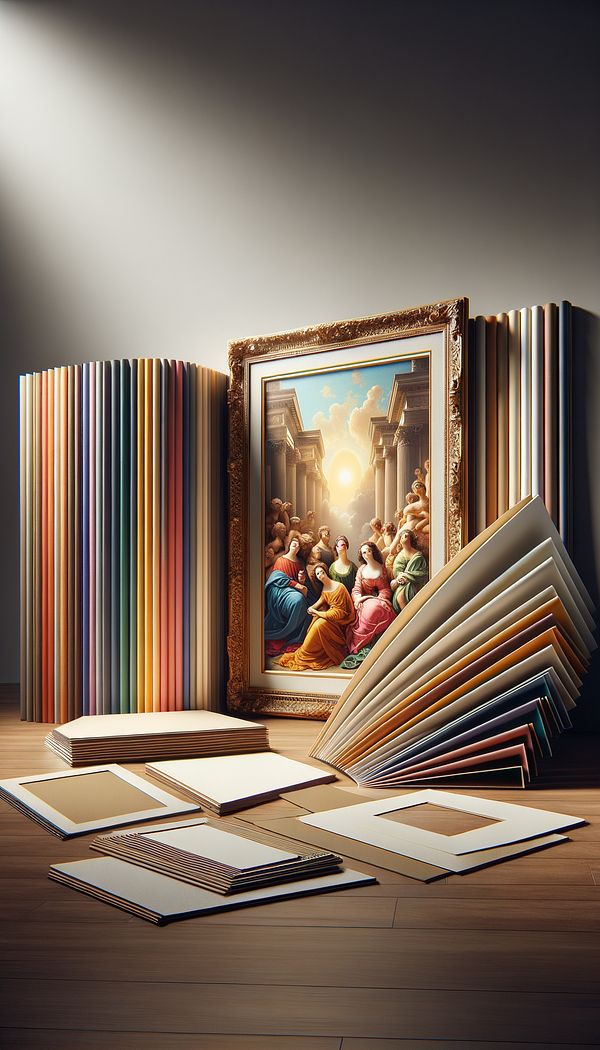What is Mat Board?
Mat board is a thick, paper-based material used for framing art.
Description
Mat board plays a crucial role in the world of interior design, particularly when it comes to displaying artwork and photographs. It is essentially a thick, paper-based material, which comes in various colors and textures, and is used primarily for framing.
The primary function of mat board is to create a space between the art and the glass of the frame. This not only enhances the visual appeal of the framed piece by drawing the eye toward the artwork but also serves a protective function by preventing the artwork from touching the glass, which could lead to damage from condensation or sticking. Furthermore, mat boards can be cut with a beveled edge, adding a sophisticated and professional look to the framing.
Selecting the right mat board can be a detailed process, as considerations such as the color, texture, and acid-free properties need to be taken into account. Acid-free mats are preferred for their longevity and protection against yellowing over time. There are also various thicknesses available, allowing for customization based on the depth of the frame and the visual effect desired.
In contemporary interior design, the use of mat board extends beyond traditional framing; creative applications include using mat boards as a part of collage walls or mixed media projects, thereby providing both aesthetic and functional benefits. Its versatility and impact on the presentation of artwork make it an essential component of interior design.
Usage
Interior designers often utilize mat boards to frame artwork in living rooms, galleries, and museums. They select mat boards to complement the color scheme of a room or to highlight particular tones within an artwork. Mat boards are also chosen for their ability to protect valuable pieces of art, ensuring they remain in pristine condition over time.
FAQs
-
What is the main purpose of mat board in framing?
The main purpose of mat board is to create a space between the art and the glass of the frame, enhancing visual appeal and providing protection for the artwork.
-
Can mat board be used for anything other than framing?
Yes, beyond framing, mat boards can be used in creative applications such as collage walls and mixed media projects, adding aesthetic and functional value.
-
Why is acid-free mat board preferred?
Acid-free mat board is preferred because it offers long-lasting protection against yellowing and deterioration, ensuring the artwork remains in good condition over time.
Practical Application
When selecting a mat board, consider the color and texture that best complement your artwork. An acid-free, beveled-edge mat board will not only enhance the appearance of your framed piece but also provide ample protection. Always factor in the overall design scheme of the space where the artwork will be displayed to choose a mat board that enhances both the artwork and the room’s aesthetics.
-
Decorative Techniques322 articles
-
Art & Sculpture30 articles
-
Decorating Principles & Elements330 articles
-
Wall & Ceiling Treatments35 articles
-
Materials & Textiles360 articles
-
AcousticsAcoustics is the branch of science that deals with the study of sound and how it is perceived in an environment.
-
RakeRake refers to the angle of slope of a wall or other surface.
-
Ribbon BandA decorative element used in various aspects of interior design.
-
Accent ColorAn accent color is a color used sparingly to add vibrancy and interest to a room.
-
ChandelierA chandelier is a decorative ceiling-mounted light fixture.
